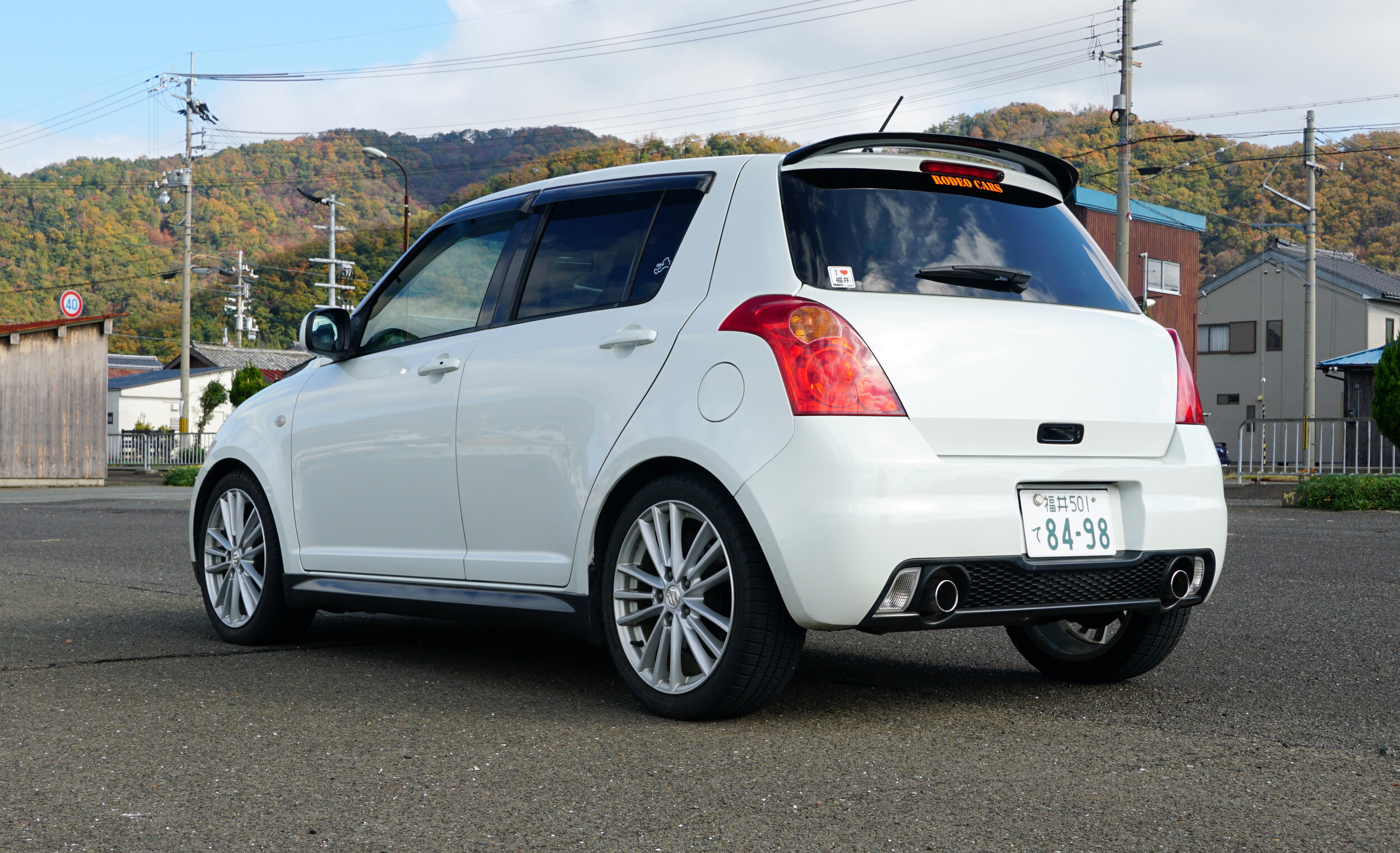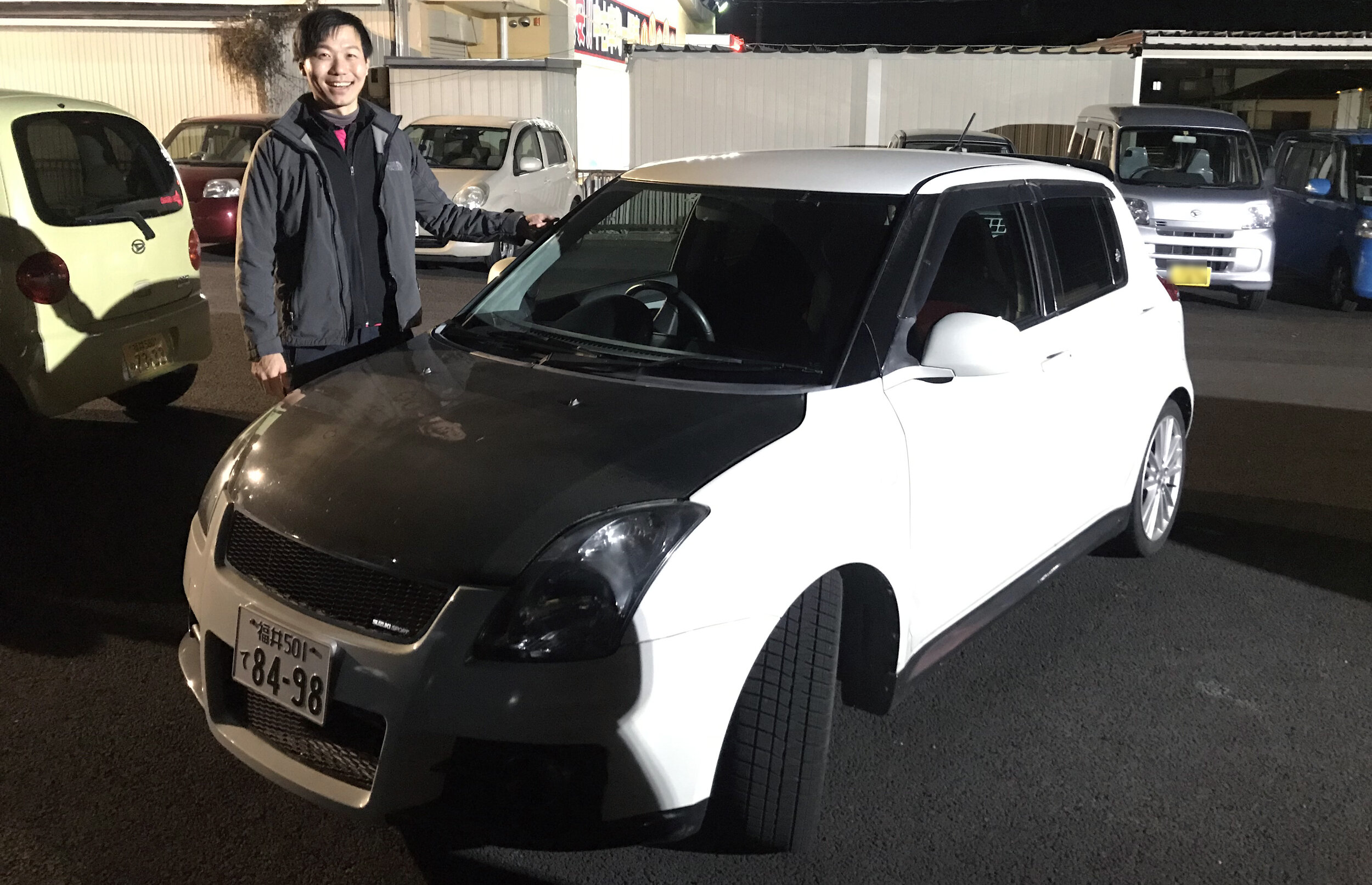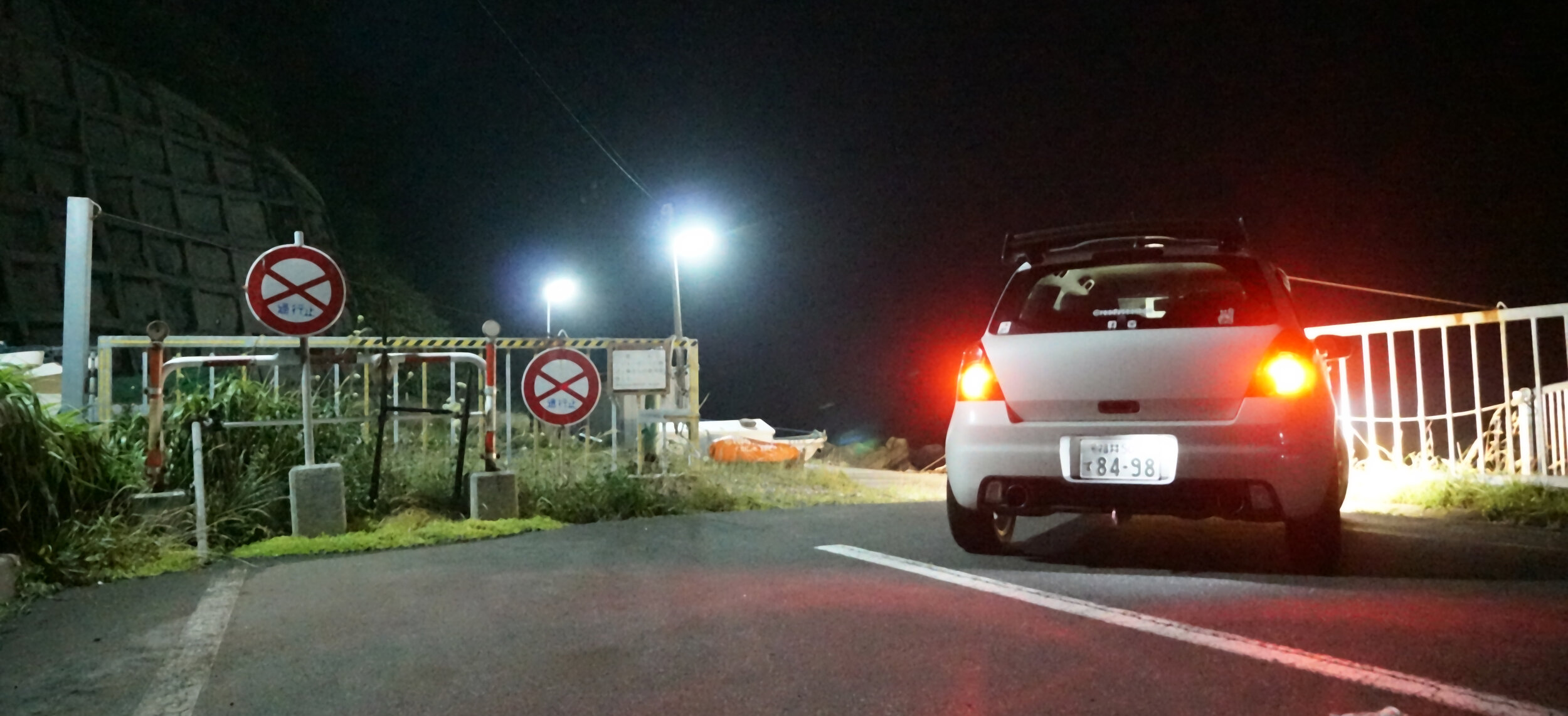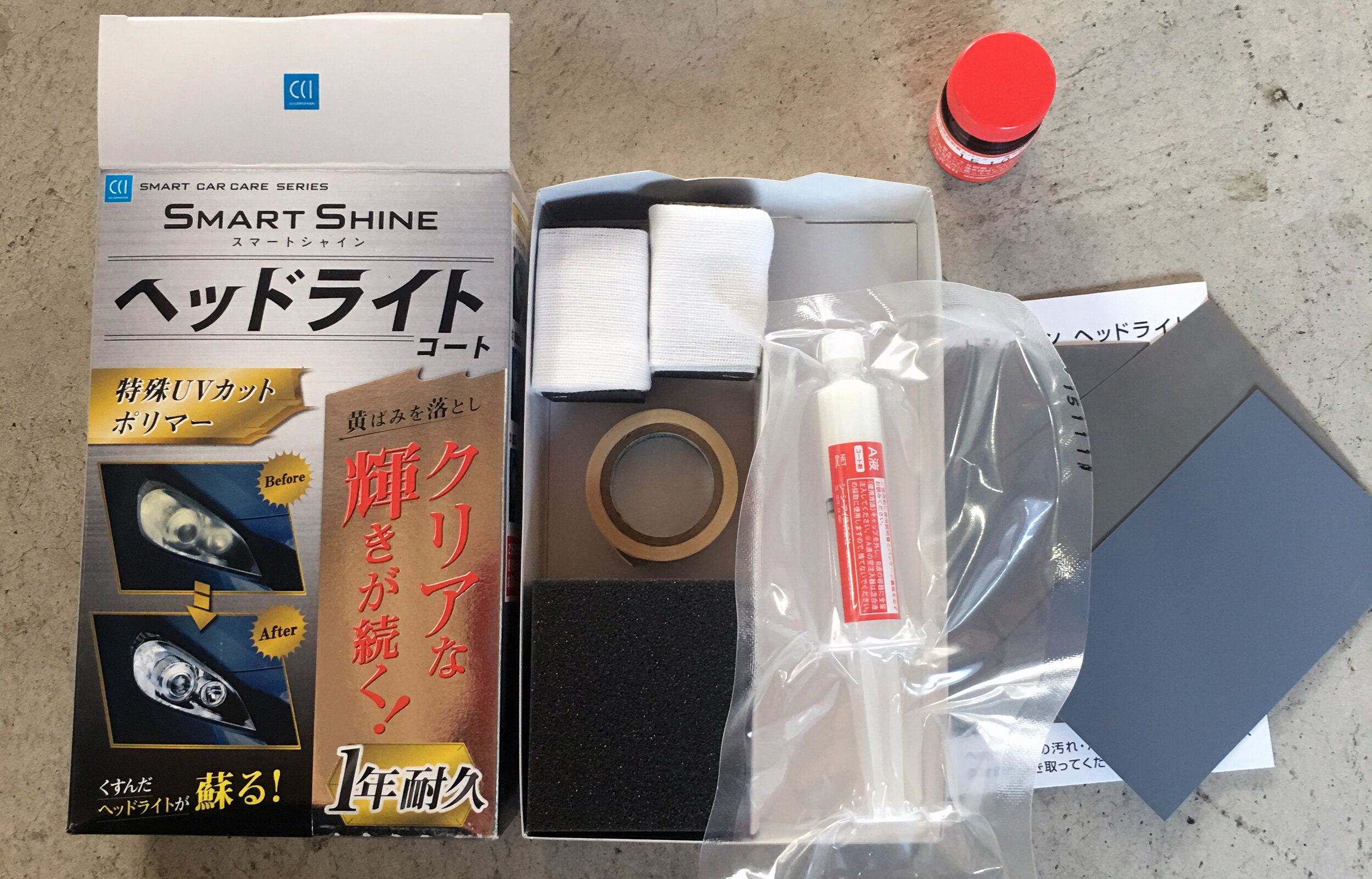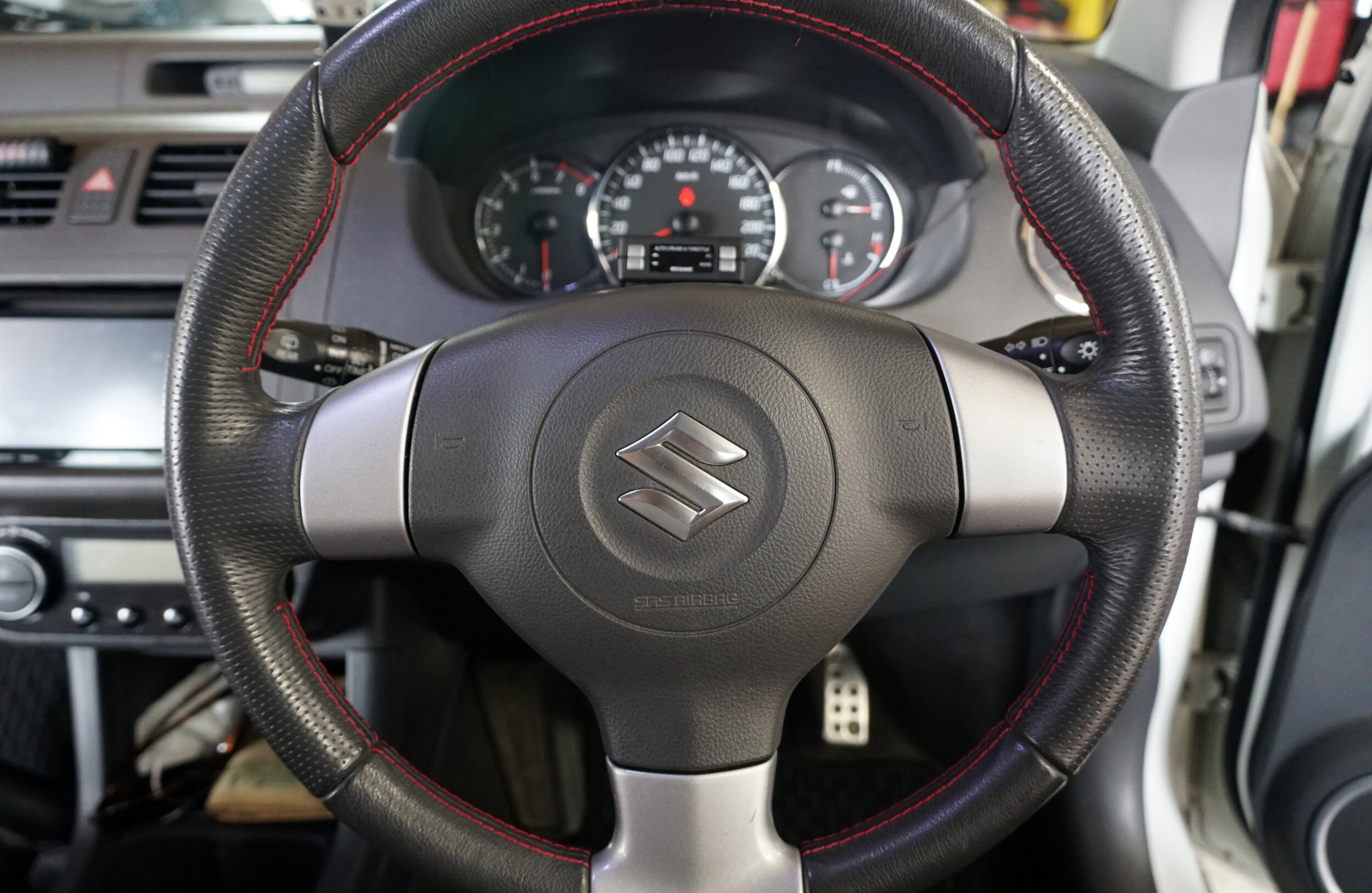Suzuki [ Swift Sport ] SOLD
As I’ve said in previous posts, I love my little Swift Sport. I have driven it halfway around Japan, literally the whole of Hokkaido and nearly three-quarters of the main island’s prefectures. The car has given me great confidence in its handling prowess and enjoyment in its comfort and ride quality. For those interested in sporty, yet very practical cars, the Swift Sport is perfect. It features superb handling, good power-to-weight ratio, and a smooth 5-speed manual transmission, all with the practicality of 5 seats and ample hatchback interior space. But I have changed the aftermarket parts off of it in the preparation to sell the car. And now it is gone...
There are quite a few ways to sell a car in Japan, so I carefully considered the pros and cons of each before I finally decided on the best course of action. There are two primary ways to sell a car, directly or through a third party.
Direct
Of course, there is always the most direct method to sell a car, buyer-to-buyer: by finding a buyer through word-of-mouth or by advertising in various forums or online sites. This might net me a fair amount of yen, but it is highly dependent on the appearance of the car in photos and the general desirability of the car… if they’re a dime-a-dozen Wagon R, I highly suspect that people aren’t going to be paying top dollar for your vehicle if they can find another one that looks better. Or if it’s strange or otherwise super eclectic, it won’t draw enough people to search and hunt for your car. And all this requires the greatest amount of effort to spread the word.
The second direct method commonly used is selling through online auctions like Yahoo! Auctions or Mercari. Given the fact I am in Japan, this requires a bit of Japanese language skill and a lot of legwork. First off, customers may ask to see the car before bidding or ask very specific questions that would be difficult to answer. Poorly written replies would draw less confidence in the buyer. After all, they might be putting a lot of money down so they won’t just go spend willy-nilly. Secondly, there is potential for auction failures or bid cancellations. Anyone who has used eBay knows this quite well. It is not uncommon even in Japan for bidders to regret their bids after. Third, but not lastly, even if the car is sold and payment has been made, the issue of arranging pickup and name transfer is not as easy as signing over a pink slip. (I’ve done this nearly a dozen times and it still confuses me.) However, this actually might net me the highest income from the widest potential customer base, dependent on the aforementioned factors.
Third-Party Sales
Many people in Japan end up selling their 10 year-old cars to a used car dealership like Gulliver or Big Motor, two of the more common shops I see around locally, because it is a simple, smooth, and quick transaction. They are typically looking for a certain type of car, usually newer and unmodified, to resell back on their huge lots. Unfortunately, with such huge storefronts, inventory, and staff, they have higher overhead operating costs and will pass such onto any customer looking to sell off a car. Convenience comes at a price, after all.
I’ll give you my own personal example. I brought a friend’s car to Gulliver a few months ago and their quote was… disappointing, to say the least. A perfectly-operating, decently-new kei car with some shaken left should definitely fetch more than 5000¥... the shaken alone would be worth more. Let’s just say I will never be back to support them.
What happens to a car they buy that they are not interested in reselling or doesn’t meet their standards? They end up getting pushed to a second third-party seller by way of an auctioneer….
Which is the last option available to me at this time. A car auctioneer is a licensed dealer who can buy and sell cars at car auctions, none of which are open to the public. Aforementioned dealers will sell their car to these auctioneers for pennies on the dollar as a quick way to rid themselves of excess inventory. They will, in turn, take the car and prep it for the auction block.
If you’re any kind of car fanatic, you would likely have come across a glimpse of this on Mighty Car Mods. If you haven’t watched the video or follow them at all, I would highly recommend checking them out.
Buyers of said auctions will usually be small, niche dealers looking to sell to their local markets, doing minimal maintenance and slapping shaken on it essentially in name only. Buying from such auctions and smaller dealerships is a bit of a gamble; you have to take on a bit of risk with the lower price.
In the end, I took the second-easiest route that will also net me the second-lowest amount, the auctioneer. My friend at Rodeo Cars has a friend in Nagoya working at such a place. So the drop-off was made on Saturday, November 30th.
While the car is gone, it is technically not SOLD. Not just yet. It’ll go on the auction chopping block in the next few weeks. How much it’ll sell for is a complete unknown, but estimations go for about 100,000¥ ($900 USD). Yes, I know it’s not much, but that is how car auctions go. I’ll update when I get the final selling price.
We’ve had a good run, buddy... This is the literal end of the road for us.
Update December 15, 2019: The car sold at auction for 150,000¥, which is actually on the high end of what other Swift Sports go for. Unfortunately, the auctioneer takes a set fee for handling, but overall, I am not displeased.
Time to go car shopping!



